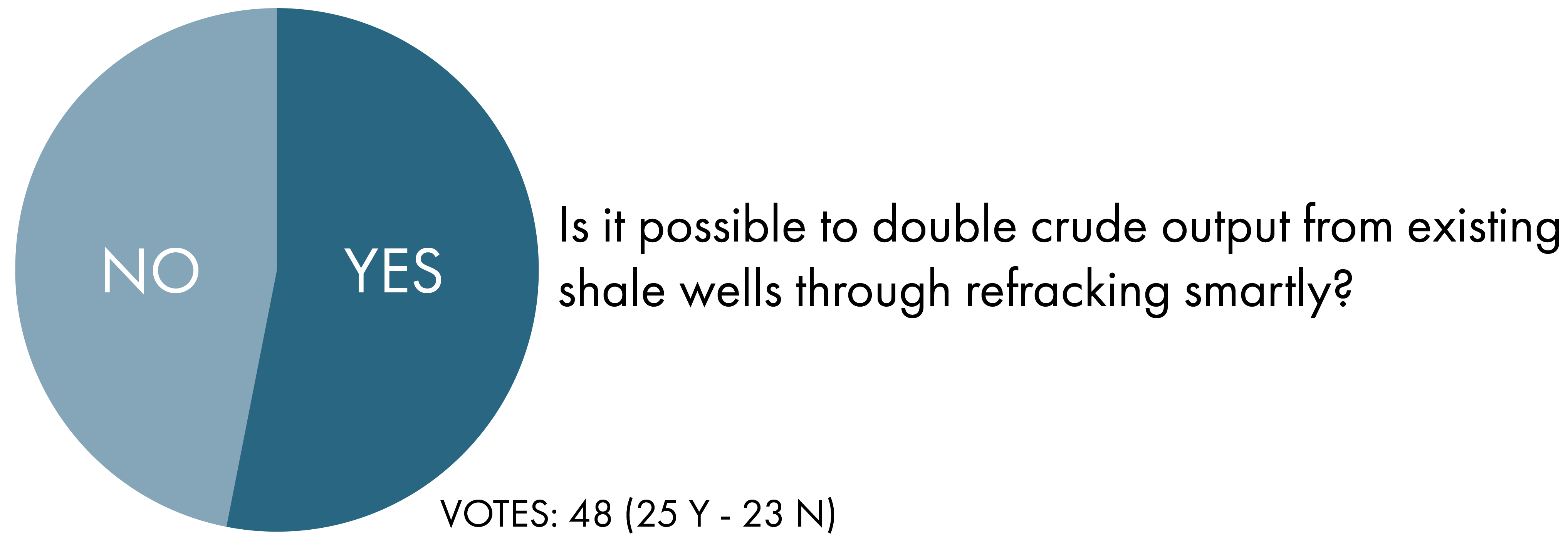“Oil major ExxonMobil bets that through technological advances, shale producers can manage to double crude output from their existing wells.” That was one of the headlines from an article published by the website oilprice.com in June this year.
In order to find out what our followers on LinkedIn think about this claim, we decided to run a poll. It appears that out of a group of 48 voters, 52% are of the opinion that it is possible to achieve this, whilst the remaining 48% see it as a fairy tale. An almost 50-50 split. So, all eyes are now on ExxonMobil to see if they can make this happen and cause another wave of production from the shale patch.
As reported by Bloomberg News, ExxonMobil Chief Executive Officer Darren Woods said at a Bernstein Strategic Decisions conference this spring: “There’s just a lot of oil being left in the ground. Fracking has been around for a really long time, but the science is not well understood.” Exxon’s plans include a more precise way of fracking along the wellbore, targeting previously undrained intervals. In addition, the major is also looking at ways to keep fractures open for longer.
Producing the Permian Ocean
Ted Cross from Novi Labs recently posted on LinkedIn how the rise of oil production in the Permian Basin also meant a steep rise in water production. Someone rightfully commented on the post by stating that it is the fossil water from the Permian Ocean that is currently being produced. Interestingly though, Water-to-Oil Ratios have started to come down a little in the Permian. This could be explained by a gradual move towards lower permeability reservoirs where there is less free water available.
Refracking wells is a technique that has already been adopted by several players in the US shale business, the oilprice.com article continues. In some cases, as a study performed by Robert Barba suggests, refracking of an older well can result in a significant uplift in recovery rates, because fractures resulting from a refrac operation will propagate into another direction compared to the initial fracking job. This is caused by the drop in pressure in the reservoir as a consequence of production and the associated change in stress regime.
Yet, refracking remains a niche market in the oil patch, the oilprice.com article further informs using data presented by Rystad. Out of the 8,900 total stimulations from January to September, only a little more than 2% were refracked wells.

Feedback
We tried to get some feedback from individual voters on the motivation for their choice, but this was harder than expected. It seems that people are reluctant to share their insights, which could indicate that some just vote to see the result of the poll. For that reason, we will introduce an option to subsequent polls that includes “Here for the results”.





